Casement Windows Overview
Definition of Casement Windows
Casement windows are a type of window attached to its frame by one or more hinges on the side. These windows open outward like a door, and provide excellent ventilation and clear views. Unlike other window types, casement windows are known for their versatility and are often used in various architectural styles.
Historical Background
Casement windows have a rich history that dates back to medieval Europe. Traditionally made of iron and glass, they were the standard window type in most homes before the advent of sash windows. Their design has evolved over the centuries, but the fundamental mechanism of side-hinged opening remains popular. Traditional casement windows are particularly valued for their historical significance and compatibility with period properties.
Overview of Popularity and Usage
Today, casement windows are favoured for their functionality and aesthetic appeal. They are widely used in both traditional and contemporary homes, offering a blend of classic style and modern efficiency. Their ability to catch breezes and direct airflow into a room makes them particularly popular in areas where ventilation is key.
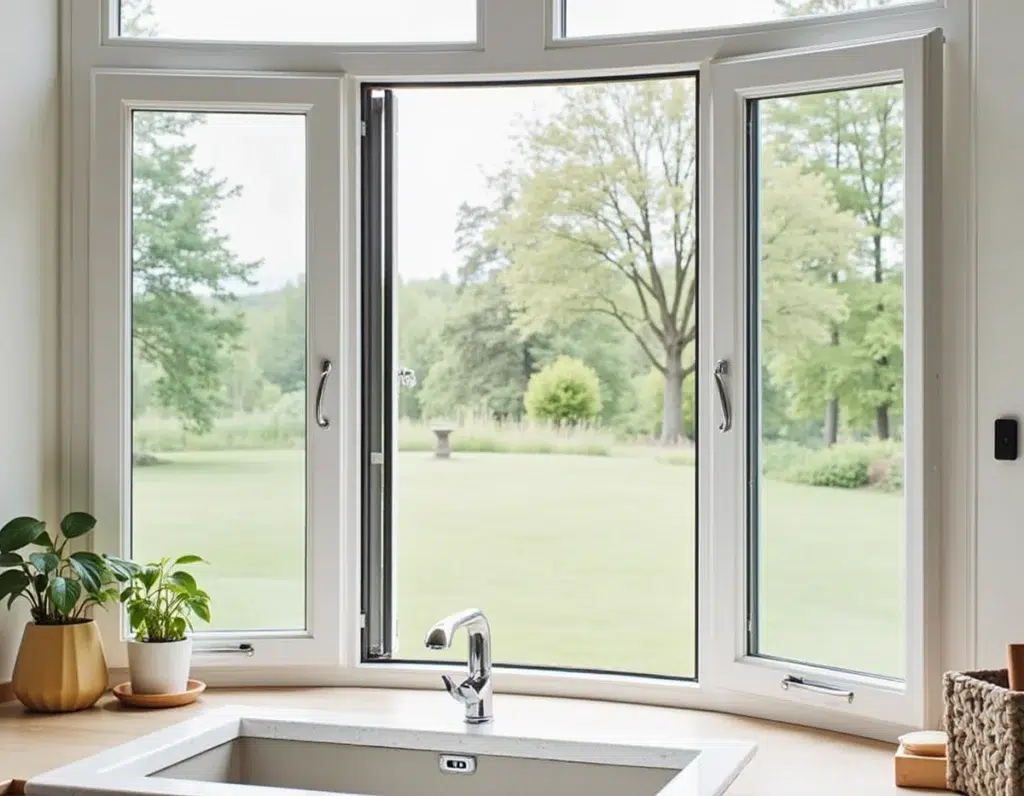
Types of Casement Windows
Single Casement Window
Single casement windows feature one sash that opens outward. Casement windows are hinged vertically along the window frame, allowing them to open to the left or right with a simple turn of a handle. They are ideal for smaller spaces and provide an unobstructed view. Their simple design makes them a popular choice for many homeowners looking to maximize light and ventilation.
Double Casement Window
Double casement windows, also known as French casement windows, have two sashes that open outward from the center. These windows offer even greater airflow and an expansive view, making them a beautiful and functional option for larger window openings. In comparison, an awning window is hinged at the top, allowing for ventilation even in rainy conditions, which can be particularly beneficial for rooms like bedrooms.
French Casement Window
French casement windows are a subtype of double casement windows but with a more refined and symmetrical design. They open wide without a central mullion, allowing for a fully unobstructed view and maximum ventilation. These windows are often chosen for their elegant appearance, especially in classic or French-inspired architecture.
Push-out Casement Window
Push-out casement windows operate without the need for a crank handle. Instead, you simply push the sash open with a gentle push. They offer a more traditional look and are favoured for their ease of use and aesthetic appeal, especially in cottages or historic homes.
| Type | Description | Best For |
| Single Casement Window | Features one sash that opens outward, ideal for smaller spaces. | Small rooms, areas needing unobstructed views |
| Double Casement Window | Two sashes opening outward from the center, providing expansive views and airflow. | Large window openings, living rooms |
| French Casement Window | A refined double casement window without a central mullion, offering a fully unobstructed view. | Classic or French-inspired architecture |
| Push-out Casement Window | Operates without a crank, simply pushes open for a more traditional look. | Cottages, historic homes |
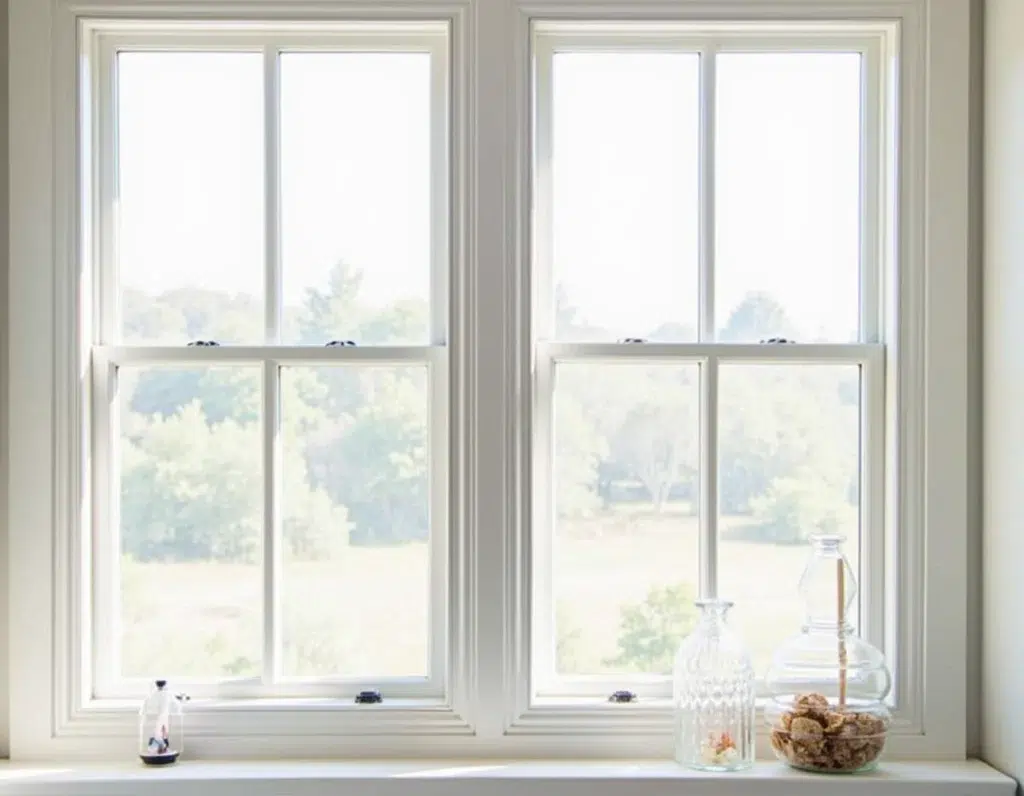
Design and Aesthetic Options
Frame Materials
- Wood
Wood frames are a classic choice for casement windows, offering a timeless look that complements both traditional and modern homes. They provide excellent insulation but require regular maintenance to protect against weather damage. - Vinyl
Vinyl is a popular, low-maintenance option that is resistant to moisture and doesn’t require painting. These frames are energy-efficient and come in various colours and finishes, allowing them to be flexible to your home’s unique style. - Aluminum
Aluminum frames are known for their strength and durability. They have a sleek, modern appearance and are ideal for larger windows. However, they can be less insulating compared to wood or vinyl. - Fiberglass
Fiberglass frames combine strength with energy efficiency. They can mimic the appearance of wood but are more resistant to warping and rotting. Fiberglass is an excellent choice for homeowners looking for durability and minimal maintenance.
Glass Types
- Single-pane vs. Double-pane
Single-pane glass is less common in modern casement windows due to its lower energy efficiency. Double-pane glass, with two layers of glass and an insulating space in between, is the standard for better insulation and energy savings. - Low-E Glass
Low-emissivity (Low-E) glass has a special coating that reflects heat while allowing light to pass through. By reflecting heat, Low-E glass improves energy efficiency, and keeps homes cooler in the summer and warmer in the winter. - Tinted and Decorative Glass
Tinted glass reduces glare and heat from the sun, making it a good choice for windows exposed to intense sunlight. Decorative glass options, such as frosted or stained glass, add a unique aesthetic element while providing privacy.
| Customer Need | Recommended Material | Recommended Glass Type | Benefits |
| Energy Efficiency | Fiberglass | Low-E Double-pane | Excellent insulation, reduces energy bills, and maintains indoor comfort |
| Low Maintenance | Vinyl | Double-pane | Resistant to moisture, requires no painting, provides good insulation |
| Aesthetic Appeal | Wood | Low-E Decorative Glass | Classic, timeless look with customizable decorative options for added style |
| Durability in Harsh Climates | Aluminum | Double-pane | Strong, durable material combined with insulating glass to withstand weather extremes |
| Natural Light and Privacy | Wood or Vinyl | Tinted or Decorative Glass | Maximizes natural light while offering privacy, suitable for living spaces |
Color and Finish Options
Casement windows are available in a wide range of colours and finishes to match any home exterior. Whether you prefer the natural look of wood, the bold colours of vinyl, or the sleek finish of aluminum, there are options to suit your taste. Many manufacturers offer custom colours to provide a perfect match with your home’s décor.
Hardware Styles and Finishes
The hardware on casement windows is not just functional but also adds to the overall design. Available in finishes like brass, chrome, and matte black, you can choose hardware that complements your home’s style. From traditional to contemporary, the right hardware can improve both the appearance and ease of operation of your windows.
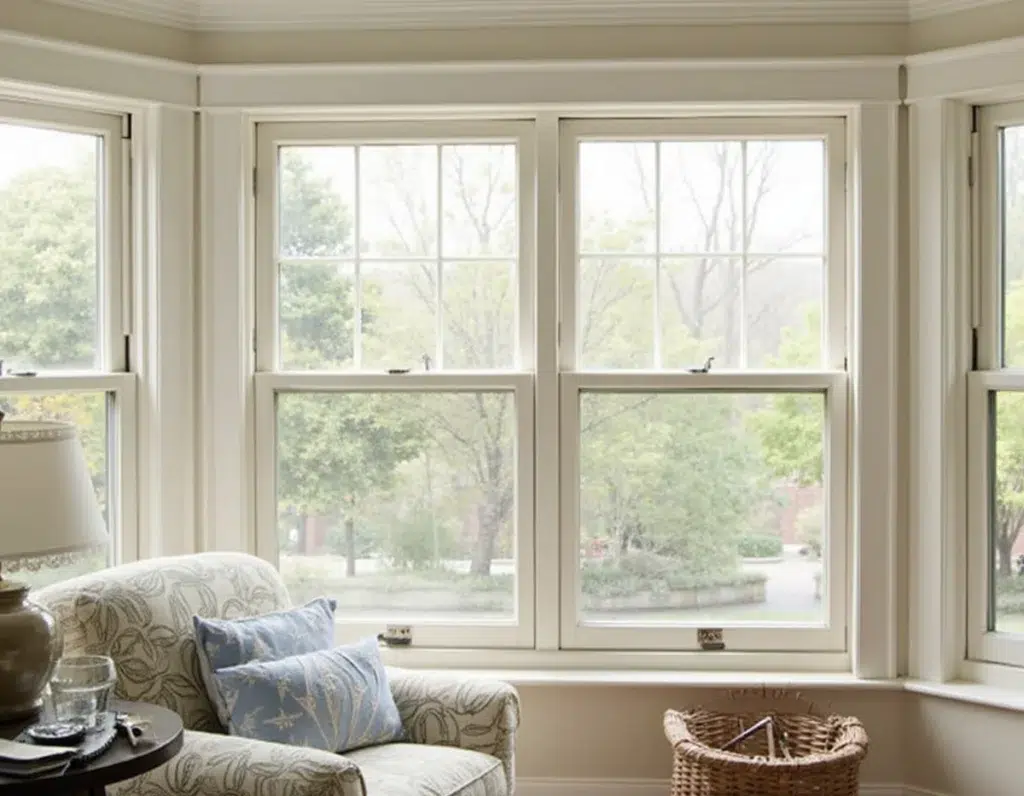
Functionality and Operation
Opening Mechanisms
Crank Mechanism
Crank windows are the most common way to have casement windows open and close. By turning the crank, the window swings outward smoothly, allowing precise control over its position, which makes adjusting for ventilation easy.
Push-out Mechanism
Push-out casement windows eliminate the need for a crank, offering a more straightforward operation. A simple push on the window sash opens it, giving a more traditional feel and allowing for quick and easy access to fresh air.
Ventilation Benefits
Casement windows are known for their superior ventilation capabilities. Because they open outward fully, they can catch side breezes and funnel fresh air into your home, making them an excellent choice for rooms where airflow is essential.
Energy Efficiency
Casement windows are among the most energy-efficient window types due to their tight seals when closed. The single sash presses firmly against the frame, reducing drafts and preventing heat loss. When paired with energy-efficient glass options like double-pane or Low-E glass, they can significantly lower energy bills.
- Insulation Properties
The design of casement windows helps them provide excellent insulation. With fewer gaps and a secure locking mechanism, they keep out exterior air, contributing to a comfortable indoor environment. - Sealing Mechanisms
A key feature of casement windows is their effective sealing mechanisms. The compression seal around the edges of the sash creates a strong barrier against the elements, preventing air and water infiltration. This tight seal increases the insulation and weather resistance properties of the window, making casement windows a good choice for harsh weather conditions.
Security Features
Locking Systems
Casement windows are often considered more secure than other window types. The hook-shaped lock embedded in the frame makes it difficult for intruders to force open the window from the outside, and hinge guards on the hinged side prevents intruders from forcing the window open along this side.
Child Safety Options
For families with young children, casement windows can be fitted with child safety locks to prevent accidental openings and provide some peace of mind.
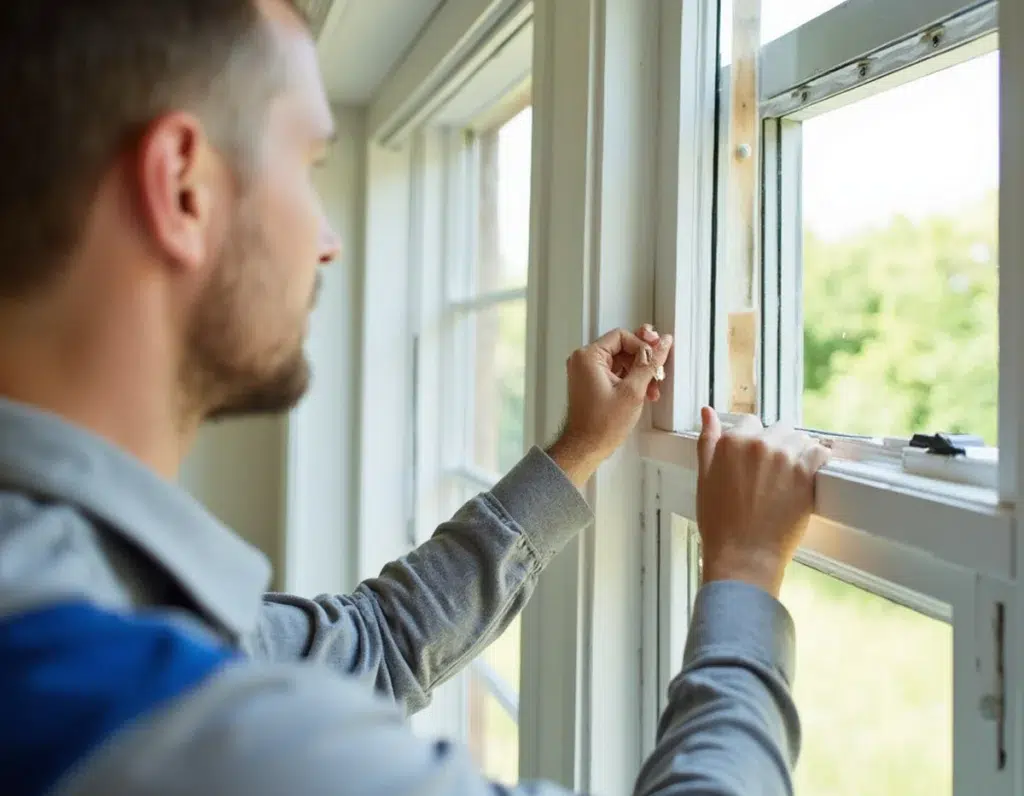
Installation Process
Measuring for Casement Windows
Accurate measurements are critical for a proper fit. Measure the width and height of the window opening at multiple points to make sure any variations are accounted for.
Installation Steps
- Preparing the Opening
Before installation, the window opening must be prepared by removing the old window and cleaning and leveling the opening. Preparing the opening is an important step toward a secure and efficient installation. - Installing the Frame
The new casement window frame is then placed into the opening and secured with screws. Making sure that the frame is level and square helps avoid operational issues later on. - Securing and Sealing
After the frame is in place, it’s time to secure it with additional screws and apply a sealant around the edges. Proper sealing keeps out drafts and water, and allows for your windows to perform well long term.
DIY vs. Professional Installation
While some homeowners may attempt to install casement windows themselves, professional window installation is recommended. Professionals have the experience and tools necessary to achieve a perfect fit and finish, reducing the risk of problems down the line.
Common Installation Challenges
Installing casement windows can present challenges, such as verifying the frame is perfectly level and dealing with irregular openings. Professional installers are equipped to handle these issues, allowing the window to function as intended and look great.
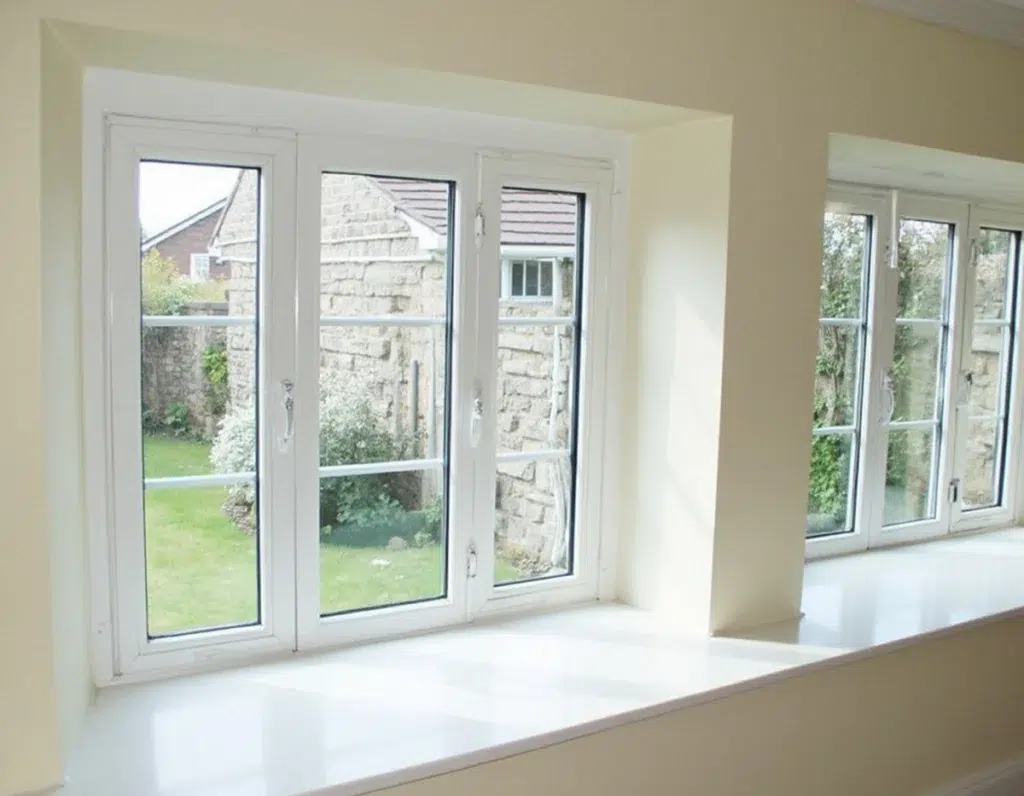
Maintenance and Care
Regular Cleaning Tips
Maintaining the appearance and functionality of your casement windows requires regular cleaning. By keeping the frames, glass, and hardware in good condition, you can extend the life of your windows.
- Frame Cleaning
The frame of your casement windows should be cleaned with a mild detergent and water. For wood frames, avoid excessive moisture to prevent warping. Vinyl and aluminum frames are easier to maintain and can be cleaned with a simple wipe-down. - Glass Cleaning
Clean the glass with a non-abrasive glass cleaner and a soft cloth. Avoid harsh chemicals that can damage any special coatings, such as Low-E. For hard-to-reach areas, a squeegee can help achieve a streak-free finish. - Hardware Maintenance
The hardware, including hinges and cranks, should be lubricated periodically to keep it operating smoothly. Check for any signs of rust or wear, and address issues promptly to prevent further damage.
Inspection and Repair
Regular inspections can help you catch small common window problems before they become major problems. Look for signs of wear or damage to the seals, glass, and frames.
- Identifying Common Issues
Common issues with casement windows include problems with the crank mechanism, worn-out seals, and drafts. - Repairing Mechanisms and Seals
If the crank mechanism becomes difficult to operate, it may need lubrication or replacement. Worn seals should be replaced to maintain energy efficiency and prevent leaks. - Repainting and Refinishing
For wood frames, occasional repainting or refinishing may be necessary to protect the wood from moisture and UV damage. Sanding and applying a fresh coat of paint or stain can restore the appearance of your windows.
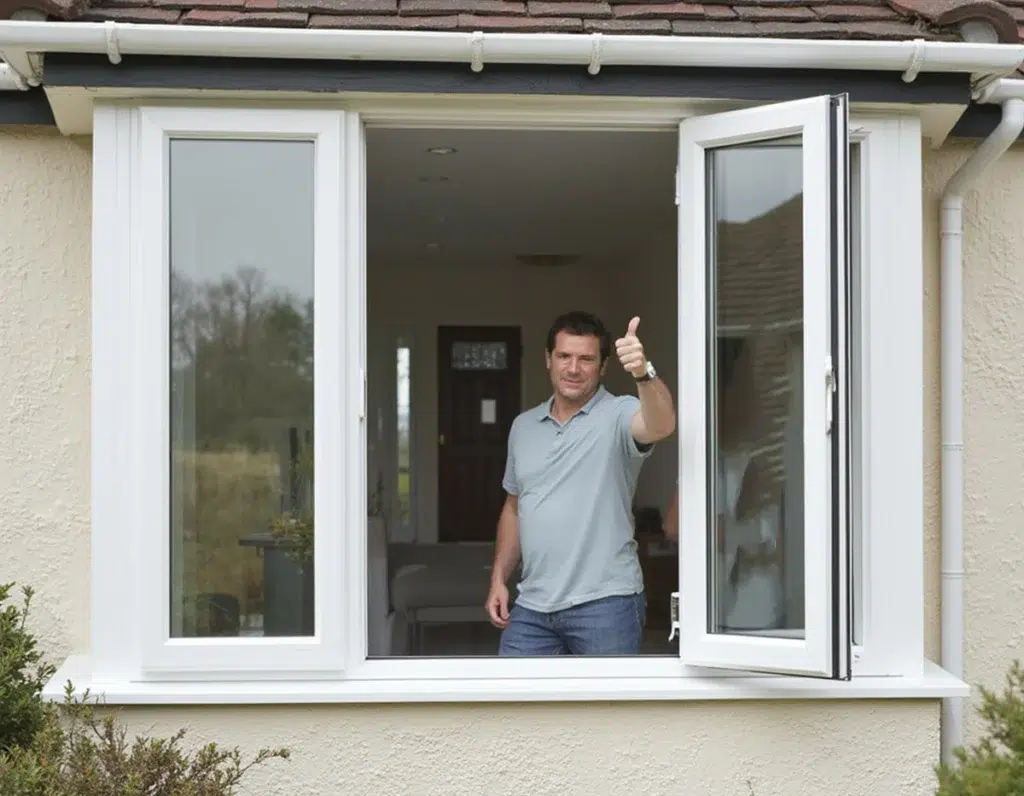
Pros and Cons of Casement Windows
Advantages
- Excellent Ventilation
Casement windows provide superior ventilation by fully opening outward, capturing side breezes and directing fresh air into your home. Their design allows for better airflow than other window types. - Unobstructed Views
The design of casement windows offers clear, unobstructed views. With no central mullion, they provide a wide, open sightline, making them ideal for rooms with scenic views. - Energy Efficiency
Casement windows are among the most energy-efficient options available. Their tight seals prevent drafts, reducing heating and cooling costs. When paired with energy-efficient glass, they offer even greater savings. - Safety as Egress Windows
Casement windows can serve as egress windows, providing a quick escape route in emergencies such as fires. Their design allows for unobstructed exits and complies with building codes.
Disadvantages
- Cost Considerations
While casement windows offer many benefits, they can be more expensive than other window types. The cost may be higher due to the complexity of the opening mechanisms and the need for precise installation. - Potential Mechanical Issues
The crank mechanism in casement windows can wear out over time, leading to difficulty in operation. Regular maintenance can mitigate these issues, but repairs may be necessary as the windows age. - Limitations in Certain Installations
Casement windows may not be suitable for all locations. In areas with limited exterior space, such as near walkways or patios, the outward-opening design can be a hindrance.
| Advantages | Disadvantages |
| Excellent Ventilation | Higher cost compared to other window types |
| Unobstructed Views | Potential mechanical issues with crank |
| High Energy Efficiency | Limitations in certain installations |
| Safety as Egress Windows | Outward-opening design may be a hindrance in tight spaces |

Comparing Casement Windows to Other Window Types
Casement vs. Double-Hung Windows
Casement windows and double-hung windows each have their strengths. While casement windows offer better ventilation and energy efficiency, double-hung windows are easier to clean from the inside and provide flexible opening options.
Casement vs. Sliding Windows
Sliding windows operate by moving horizontally along a track, whereas casement windows swing outward. Casement windows generally offer better insulation and ventilation, but sliding windows are often chosen for their simplicity and ease of use.
Casement vs. Awning Windows
Awning windows are similar to casement windows but are hinged at the top rather than the side. Both types are window hinged, with casement windows anchored at one side and awning windows at the top, providing different opening mechanisms. Both types provide good ventilation, but awning windows are better suited for spaces where you want to maintain privacy while allowing airflow, such as bathrooms.
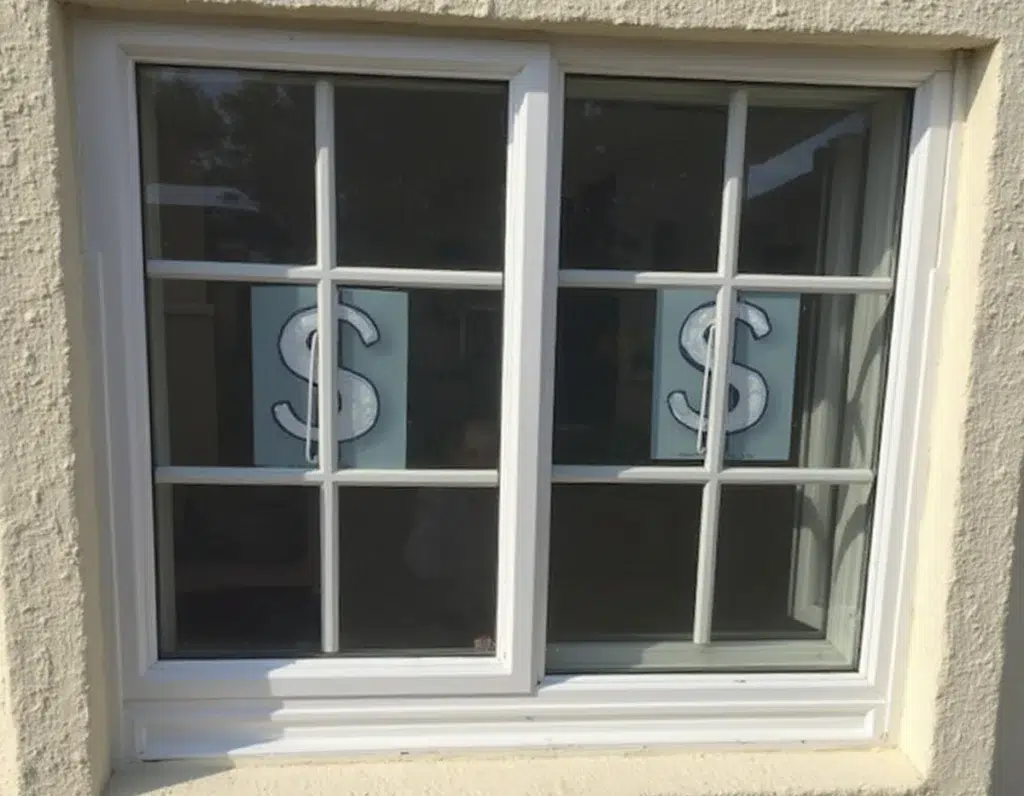
Cost Considerations
Factors Affecting Cost
Several factors influence the cost of casement windows, including size, design, materials, and installation complexity.
- Size and Design
Larger windows or those with custom designs will typically cost more. Complex designs, such as French casement windows, also add to the price. - Material and Glass Choices
The choice of frame material, such as wood, vinyl, or fiberglass, will impact the cost. High-performance glass options like Low-E or double-pane glass will increase the total cost. - Installation Complexity
The complexity of the installation process can affect the final cost. Homes with irregular openings or those requiring custom fitting may have higher installation fees.
Budgeting Tips
When budgeting for casement windows, consider both the upfront costs and long-term savings from energy efficiency. It’s wise to get multiple quotes from professional installers to make certain you’re getting the best value for your investment.
Cost vs. Value Analysis
While casement windows may have a higher upfront cost compared to other types, their energy efficiency and durability can offer significant savings over time. The value they add to your home, in terms of both aesthetics and functionality, often justifies the initial investment.
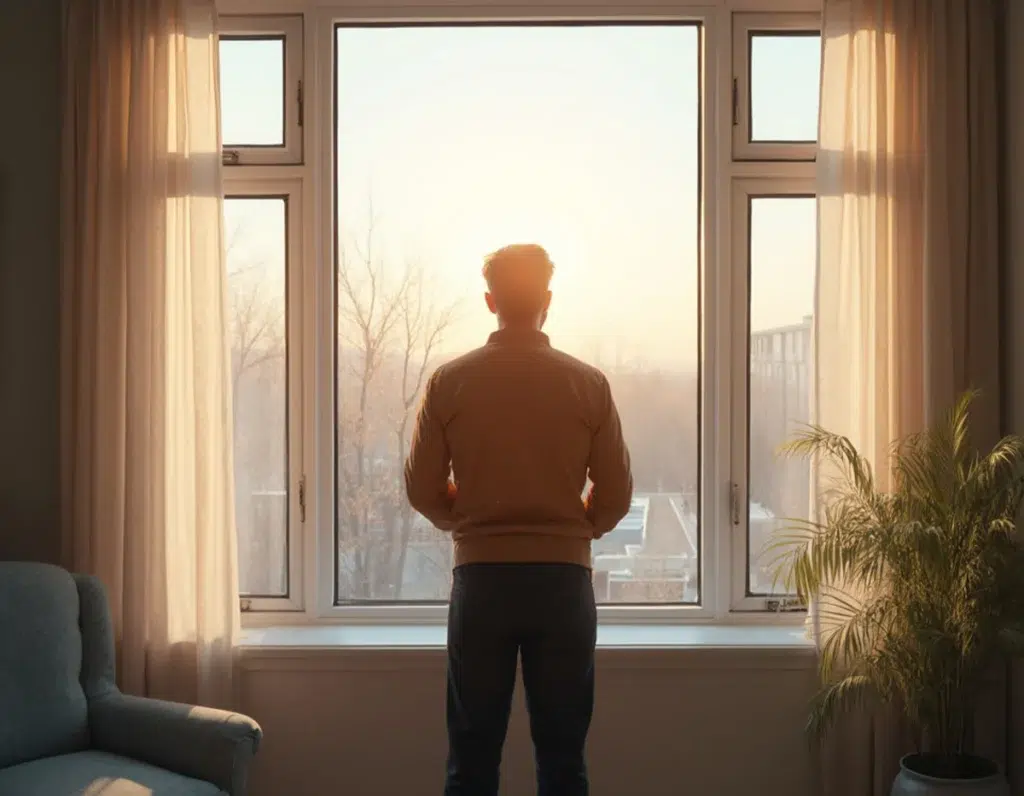
Choosing the Right Casement Windows for Your Home
Assessing Your Needs
Before selecting casement windows, it’s important to assess your specific needs. Consider factors like the climate you live in, the architectural style of your home, and the primary function of the windows in each room.
Climate Considerations
In areas with harsh winters or hot summers, energy-efficient casement windows with double-pane or Low-E glass can help regulate indoor temperatures and reduce energy bills.
Matching with Architectural Style
Casement windows are versatile and can complement a wide range of architectural styles. Whether your home is traditional, modern, or somewhere in between, there are casement window designs that will meet your needs.
Consulting with Professionals
Choosing the right casement windows is easier when you consult with professionals. They can offer advice on the best materials, styles, and features for your home, making sure your new windows meet your expectations in both form and function.
Common Myths and Misconceptions
Casement Windows Are Hard to Maintain
A common misconception is that casement windows require a lot of maintenance. In reality, regular cleaning and occasional lubrication of the moving parts are usually sufficient to keep them operating smoothly.
They Are Not Secure Enough
Some people believe that casement windows are less secure than other window types. However, modern casement windows are equipped with advanced locking mechanisms that provide excellent security, making them a safe choice for any home.
Casement Windows Are Too Expensive
While it’s true that casement windows can be more expensive than some other types, the cost is often offset by their energy efficiency, durability, and the long-term value they add to your home.
Making the Most of Casement Windows
Casement windows offer a blend of style, functionality, and energy efficiency that makes them a valuable addition to any home. By understanding the different types, materials, and features available, you can choose the perfect casement windows to complement your living space.
With proper installation and maintenance, these windows will provide years of reliable performance and aesthetic appeal. Whether you prioritize ventilation, energy savings, or security, casement windows are a smart investment that can improve both the comfort and value of your home.
Reach out to us today if you are interested in discussing the different options for casement windows, and if you’re seeking advice. Our team of dedicated professionals can help answer any questions and provide a cost estimate for your casement window needs!


